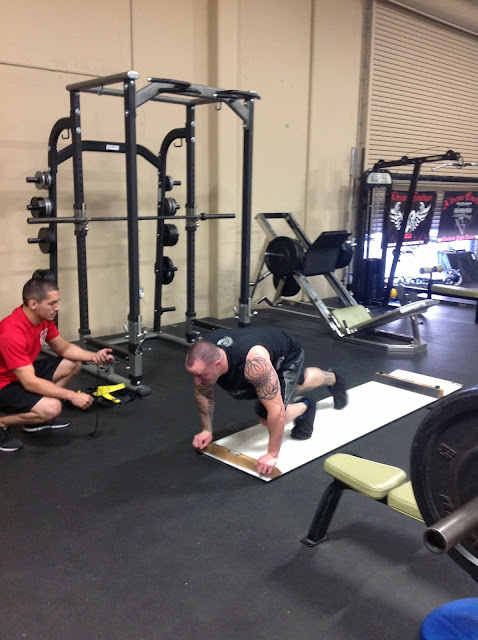As cliche as it may seem, there is definite truth to being able to accomplish anything you set your mind to - and Bruce Conner epitomizes that statement. After qualifying at age 49 and 53, Bruce is preparing for the 2014 Winter Olympic trials (at age 57) as the oldest adult to ever try out for the international competition.
With age, training needs are a grand consideration for such a lofty goal. For this lifelong dream, Bruce chose the ULTRASLIDE Slideboard as his primary training tool. Bruce recently shared his inspiring story about his personal Road to Sochi 2014.
What is your history with speed skating?
My experience with speed skating covers many years. I started speed skating at age 12 and competed until age 19. I started locally, finally retiring form the sport as a national team member just before the 1976 Olympic games. However, I stayed active over the years and returned as a 40-year-old athlete just for the fun of it. I skated once a week and raced once a month and gradually began reaching speeds that I attained when I was a teenager. At age 48, I hired a coach and started to train seriously, which led to my qualifications during the Olympic trials at age 49, 53 and now age 57. I also hold numerous world records and world championships in my age group. I continue to skate faster now than ever.
Describe the primary training objectives for speed skaters.
There are two overall objectives: one is building the [internal] motor, the other is to learn and apply proper skating technique for speed and efficiency. The slideboard most closely approximates the push for momentum we experience on the ice. It also helps to duplicate proper skating technique for application on the ice. Staying in the skating position on the slideboard helps to build the endurance for proper technique. The slideboard speaks to both objectives leading to muscle strength, endurance, and this technique development. Using a slideboard with a mirror helps me to be aware of proper body position. The repetitive nature of sliding also strengthens the neuro-muscular bonds to cement good technique.
What is the most challenging part of speed skating?
Since speed skating is a power sport, it requires good technique even when you are tired. For this reason, physical conditioning is paramount. Speed skating is not a natural activity. It is purely learned. Without proper technique and the ability to maintain it, your speed suffers and works against you during the competition. The slideboard provides the best alternative for off ice speed skating training.
We only have access to long track ice for about 6 months of the year. The slideboard helps with off ice training anytime and practically anywhere. I use the ULTRASLIDE Slideboard in conjunction with my on-ice training by using it to warmup before getting on the ice. This helps me to get my skating neurons firing properly so when I get on the ice I am productive right away.
Do you find the ULTRASLIDE to be multi-faceted in training?
Yes, the slideboard helps with both the technical aspects of skating as well as the physical training and conditioning. I perform two types of workouts on the slideboard. One is designed to reach time benchmarks in the skating position. The other is for interval training, all the while practicing good technique. The ULTRASLIDE is truly the best way to duplicate skating off the ice that I know. It's highly durable and is easy to store in the home and transport when needed, placing no limits on training. I have been using the slideboard for 9 years now and I keep getting faster. It works! I have the results to prove it.
Follow Bruce's journey in preparation for the 2014 Olympic trials on his website or his blog, Faster as a Master.





